Sites: news | india | latam | brasil | indonesia
Feeds: news | india | latam | brasil | indonesia
location: Southern Ocean
Social media activity version | Lean version
It will take 880 years to achieve UN ocean conservation goals, at this rate (commentary)
- Indigenous conservationist Angelo Villagomez will speak at the Our Ocean conference, one of the largest and highest profile conferences of its kind, this week in Athens, Greece.
- He plans to say that ocean conservation has lost momentum toward protecting 30% of the ocean by 2030 and that a lot more needs to be done to address the human dimensions of conservation, including guaranteeing access rights, equity, and justice.
- “At this rate, raising the area of global ocean protection from 8% to 30% will take an additional 880 years,” he argues in a new op-ed.
- This post is a commentary. The views expressed are those of the author, not necessarily Mongabay.
To protect the oceans, we must map them (commentary)
- About 80% of our oceans remain “unmapped, unobserved, and unexplored,” according to NOAA.
- Technologies like un-crewed marine drones, high-resolution satellites, and remote operating vehicles are now being paired with modern digital mapping techniques to reveal critical new insights about the oceans.
- “Considering we’ve barely mapped a quarter of [the oceans] so far, imagine what we could know, what we could prepare for, if every inch was mapped,” a new op-ed suggests.
- This article is a commentary. The views expressed are those of the author, not necessarily Mongabay.
More than half of reef sharks and rays threatened with extinction, study shows
- More than half of known species of coral reef sharks and rays are already threatened with extinction, mostly because of overfishing, according to new research.
- The researchers reported that population trends were declining for 94 coral reef shark and ray species; of the two groups, rays were more threatened than sharks.
- Reef sharks and rays are typically caught for human consumption, and to a lesser extent for use in apparel or accessories, in aquarium displays, as food for domestic animals, and in traditional medicine.
- The study calls for urgent urgent measures to improve regional fisheries and marine protected areas management.
Negotiations to conserve Antarctic Ocean end in stalemate on many issues
- The 41st annual meeting of the Commission for the Conservation of Antarctic Marine Living Resources (CCAMLR), the intergovernmental body charged with conserving marine life in the Southern Ocean and managing fisheries there, ended Nov. 4 with little progress made on several key issues.
- In 2009 CCAMLR committed to creating a network of marine protected areas to preserve Antarctic ecosystems. It established one that year and another in 2016, but since then China and Russia have repeatedly blocked the creation of additional protected areas, as well as other conservation-related measures.
- The commission also failed to reach the consensus required to enact new regulations for the krill and toothfish fisheries, or to protect a vast nesting area for icefish discovered earlier this year.
- CCAMLR members did agree to designate eight new vulnerable marine ecosystems, areas home to slow-growing organisms such as corals, sponges, brittle stars and feather stars that are now permanently protected from bottom fishing.
To protect the Southern Ocean, leaders must act now (commentary)
- This week in Australia, global leaders have the opportunity to protect Antarctica’s vast and biodiversity rich Southern Ocean at the annual Commission for the Conservation of Antarctic Marine Living Resources (CCAMLR) meeting.
- Emperor penguins, orcas, crabeater seals, albatross, and krill are among the species that call this region home, but the latter is a key one that plays a huge role in the health of Antarctica, since it underpins the food web.
- The commercial krill fishery produces fishmeal for pets, people and aquaculture and has become concentrated in recent years, with most of the catch taken from small, nearshore areas where wildlife feed: “We need Southern Ocean MPAs and well-designed fishery measures to effectively conserve fish populations, habitats and wildlife,” a new op-ed argues.
- This post is a commentary. The views expressed are those of the author, not necessarily Mongabay.
Vulnerable Antarctic reefs reveal wealth of life as rich as tropical corals
- A research expedition led by Greenpeace identified about a dozen new vulnerable marine ecosystems in Antarctica’s Weddell Sea, and documented a range of organisms, some of which were previously unknown to science.
- Researchers argue that it’s vital to protect the Weddell Sea since this region helps to regulate the global oceans.
- This week, negotiators are discussing the establishment of a U.N. treaty that would protect the high seas, which could lead to widespread ocean protection.
- In October, the Commission for the Conservation of Antarctic Marine Living Resources (CCAMLR) will also revisit the proposal to establish three marine sanctuaries in Antarctica, including one in the Weddell Sea.
Scientists’ secret weapon to monitor the Southern Ocean? Elephant seals
- Southern elephant seals living on Kerguelen Island, a sub-Antarctic island, are helping to gather information about the Southern Ocean with data-logging devices attached to their hair.
- For instance, the elephant seals have helped gather data on sea ice formation, ocean and ice shelf interactions, and frontal system dynamics.
- The Southern Ocean provides many ecosystem services for the planet, but the region is rapidly changing due to climate change.
Countries fail to agree on Antarctic conservation measures for fifth straight year
- Members of the multilateral body responsible for Antarctic marine conservation failed to agree on new measures to protect the Southern Ocean from overfishing.
- China and Russia blocked all proposals to establish new marine protected areas.
- This story was originally published by the Environmental Reporting Collective.
For sustainable global fisheries, watchdogs focus on onshore beneficial owners
- Onshore owners of global fishing vessels have benefited from the illegal activities their crews practice, yet remain largely untouched by law enforcement.
- In the last decade, a growing number of international NGOs have worked in parallel to map out and highlight the onshore networks that fund and benefit from illegal fishing vessels around the world.
- They compile data from a wide range of sources to connect the dots between the people sailing the vessels to the people ultimately benefiting from the business.
- Eradicating fisheries crimes requires a broad portfolio of measures, from increased monitoring to strengthened corporate due diligence, with full transparency throughout the seafood supply chains at the center of it, experts say.
‘We are intimately connected with nature’: Q&A with oceanographer Kim McCoy
- The third edition of Waves and Beaches, published in March 2021 by Patagonia, examines the dynamic relationship between the sea and coast, blending lyrical prose with the theoretical study of beaches, waves and other oceanographic features.
- This new version of the book, which was published 57 years after the first edition, includes a discussion of how human-induced climate change is altering the dynamics between the sea and land, as well as the possible solutions to protecting coastlines against rising sea levels.
- The book was published as a collaboration between oceanographer Kim McCoy and the late Willard Bascom, the author of the first two editions, who acted as McCoy’s mentor in the years before his death in 2000.
Climate change isn’t fueling algal blooms the way we think, study shows
- A team of international researchers recently published the first global assessment of harmful algal blooms (HABs) — events in which toxic algae proliferate and cause harm to marine life and humans — based on nearly 10,000 recorded events between 1985 and 2018.
- The study found that there are no global trends that would suggest that climate change is having a uniform impact on HABs throughout the world, although this is a commonly held belief.
- The researchers were able to detect clearer regional trends that showed increases, decreases or no significant changes in HABs in certain parts of the world.
- It also found that there was a perceived increase in HABs amid the booming aquaculture industry, although the study does not necessarily suggest that aquaculture is causing an increase in HABs.
Ocean protection scheme can yield ‘triple benefits’ study says
- A new study suggests that carefully planned marine protected areas could yield triple benefits for the ocean, helping to maintain biodiversity, while also increasing fish yields and maximizing the ocean’s ability to sequester carbon in seafloor sediment.
- This study is one of the first to quantify the carbon footprint of ocean trawling, which it equates to the yearly emissions of the global aviation industry.
- The researchers suggest that the planning tools in this study could help inform discussions about how to protect 30% of the oceans by 2030, a goal that is expected to be adopted by the U.N. Convention on Biological Diversity later this year.
- Other proposals for how to achieve 30% protection by 2030 have mostly focused on the high seas, but this plan takes all parts of the ocean into consideration.
From penguins to sharks to whales, swimming in circles is a surprisingly common trait
- Many marine animals are intentionally swimming in circles consecutively at a relatively constant speed more than twice, according to a new study using data from movement trackers.
- The researchers say the behavior is surprising in part because swimming in a straight line is known to be the most efficient way to move about.
- They found some of the animals swim in circles during different activities, including foraging, courtship, navigation and even possibly geomagnetic observations.
How technology can help us achieve at least 30% ocean protection (commentary)
- A growing number of countries are pledging to protect and conserve at least 30 percent of the ocean by 2030.
- Securing such a vast area requires new cutting-edge technology to monitor illegal activities and movements of species. Luckily, this field has been developing fast with new inventions and tech collaborations.
- The goal can be achieved by combining data from a range of sources, connecting the data to existing systems that rangers use, and engaging the people, communities, and sectors that work closely with the sea.
- This article is a commentary and the views expressed are those of the author, not necessarily Mongabay.
For marine life, human noise pollution brings ‘death by a thousand cuts’
- A new review critically examines the issue of human-made noise in the ocean, and how it can negatively impact the behavior, physiology and survival of marine animals.
- While most research on anthropogenic noise isn’t new, the problem has generally been ignored and not addressed in conservation policies, the authors say.
- Despite the severity of the issue, there are many practical solutions to mitigate anthropogenic noise in the ocean, according to the paper.
Frustration as Antarctic conservation summit fails to declare marine sanctuaries
- A proposition to establish three new marine protected areas (MPAs) in East Antarctica, the Antarctic Peninsula and the Weddell Sea was not approved at a recent meeting of the Commission for the Conservation of Antarctic Marine Living Resources (CCAMLR), which was held online in the last week of October.
- Conservation experts who attended the meeting reported there was limited time for negotiations, and that discussions focused more on fishing renewal authorizations and the issue of a Russian vessel suspected of illegally fishing, rather than the MPA designations and climate change action.
- On the other hand, many delegates signed a pledge of support for the formation of the three MPAs, and the Weddel Sea MPA and East Antarctica MPA gained new co-sponsors.
New paper highlights spread of organized crime from global fisheries
- A recently published paper by the High Level Panel for a Sustainable Ocean Economy highlights the extent of transnational organized crimes associated with the global fisheries sector.
- Besides illegal fishing, these crimes include fraud, money laundering, corruption, drug and human trafficking, and they occur globally throughout the entire fisheries value chain: onshore, at sea, in coastal regions, and online, the paper says.
- The paper calls for an intersectional, transboundary law enforcement by governments around the world to combat these “clandestine” crimes in the global fisheries industry.
Sharks are ‘functionally extinct’ in many global reef systems, study finds
- A new study surveyed 371 coral reefs in 58 countries, and found sharks were virtually absent from 20% of the surveyed reefs, indicating that they were functionally extinct from these ecosystems.
- The research team collected 15,165 hours of video via baited remote underwater video stations (BRUVS), and used this data to analyze shark abundance on global reef systems.
- The absence of sharks was usually connected to poor governance of nearby human settlements, including unregulated and destructive fisheries.
- While sharks were missing from many reefs around the world, other locations boasted healthy shark populations due to rigorous conservation efforts.
Scientists agree on the need to protect 30% of the seas. But which 30%?
- Scientists recommend protecting at least 30% of the ocean by 2030 to safeguard biodiversity, avoid fishery collapse and build ocean resistance to climate change.
- In 2018 and 2019, representatives from the United Nations were negotiating a high seas treaty to meet this goal through a network of marine protected areas (MPAs) throughout the open ocean, but the meeting meant to finalize the treaty in March was delayed due to COVID-19.
- Two reports were presented to show how to practically protect 30% of the ocean: one from a group of researchers from University of Oxford, the University of York and Greenpeace, and the other from the University of California, Santa Barbara, and other universities and institutions.
- The two reports used different methodologies and had slightly different results, but they also showed considerable overlap in their recommendations of safeguarding certain areas of biological and ecological importance.
Climate fix? ‘Fertilizing’ oceans with iron unlikely to sequester more carbon
- Since the 1980s, scientists have studied whether adding iron to the oceans might represent a relatively simple and inexpensive solution to climate change.
- The idea is that adding iron would encourage the growth of carbon-munching marine phytoplankton that would pull carbon out of the atmosphere on a global scale.
- But a new study by researchers at the Massachusetts Institute of Technology suggests that iron fertilization, as the process is called, is unlikely to work.
As climate crisis deepens, wildlife adapts, maybe with lessons for us
- Shifts in the timing of lifecycle events, like reproduction or migration, are widely thought to be the most common response of wildlife to global warming.
- In recent years, pikas have been observed modifying their foraging habits in ways that may be behavioral adaptations to a changing climate.
- A long-term study in Kutai National Park on the island of Borneo in Indonesia has shown how extreme weather, brought by the intensifying El Niño Southern Oscillation (ENSO) cycle, is affecting the behavior, habitat requirements, feeding ecology and birth intervals of orangutans.
- Researchers have discovered that African penguins, may be falling into a sort of “ecological trap,” one that humans created through overfishing and climate change.
Ocean winds, wave heights have increased around the world
- An analysis of 33 years’ worth of data finds that ocean winds and wave heights are becoming more extreme worldwide, with the Southern Ocean seeing the largest increases.
- In order to examine long-term trends, Ian Young and Agustinus Ribal of Australia’s University of Melbourne combined nearly 4 billion measurements of wind speeds and wave heights collected from 31 satellite missions between 1985 and 2018 and data from 80 ocean buoys deployed around the globe into a single, extensive dataset.
- The researchers found that there have been small increases in mean wind speed and wave height over the past 33 years, but they found stronger increases in extreme conditions, which they define in the paper as wind speed and wave height measurements that fall in the 90th percentile or above
Warmer waters shrink krill habitat around Antarctica
- A new study has found that fewer young krill are surviving to adulthood around Antarctica as ocean temperatures have risen in the Southern Ocean in the past few decades.
- The researchers, who looked at decades of data on krill body lengths and abundance, found that the highest densities of krill had shifted southward by some 440 kilometers (273 miles) since the 1920s.
- The scientists note that the findings could alter food webs in the Southern Ocean.
- Currently, the internationally managed krill fishery does not take the location and size of the krill population into account.
Japan leaving IWC, to resume commercial whaling
- The government of Japan confirmed today that it is withdrawing from the International Whaling Commission (IWC) and will resume commercial whaling operations in the North Pacific.
- The IWC, an inter-governmental organization founded in 1946 focused on whale conservation and management of the whaling industry, adopted a moratorium on hunting whales in 1982.
- The moratorium allows for IWC member nations to issue whaling permits for scientific research purposes. Japan has openly flouted the moratorium by issuing such permits and selling the harvested whale meat ever since the moratorium took effect in 1986.
Citizen science makes easy work of penguin time-lapse image bounty
- A multinational research team has deployed time-lapse cameras at various penguin breeding colonies to enable a widespread, long-term study of these top predators in the Antarctic ecosystem.
- Volunteers have played a critical role in processing the millions of images resulting from the multi-year study to better understand reproductive behavior and nest success rates across the Antarctic Peninsula, South Shetland Islands, and South Georgia.
- Citizen scientists can help produce large data sets needed to train artificial intelligence algorithms.
Hard but worth it: researchers fight invasives on Subantarctic islands (commentary)
- Sealers and subsequent human visitors to the Southern Ocean’s windswept islands brought with them a variety of invasive species, such as mice, rats, cats, sheep, and goats, that have wrought havoc on the islands’ native wildlife and ecosystems.
- On Marion Island, midway between South Africa and Antarctica, researchers and conservationists completed the largest successful cat eradication on an island in history in 1993.
- Marion Island’s wildlife has largely rebounded from the sealers and cats, but invasive mice continue to take a toll.
- The author points to other recent successful eradications of invasive species on Subantarctic islands and argues that they are a wise investment with benefits for wildlife as well as research into the region’s ecology and the effects of climate change. The views expressed are the author’s own, not necessarily Mongabay’s.
Sea ice extent tumbles around both poles in November
- November was the seventh month in 2016 with a record-low sea ice extent in the Arctic.
- The extent of Arctic sea ice typically grows beginning in September, thanks to lower air and water temperatures, but this year it contracted by some 50,000 square kilometers (19,300 square miles).
- Warmer air around Antarctica diminished sea ice extent to 1.81 million square kilometers (699,000 square miles) below November averages recorded between 1981 and 2010.
Fiery end for the last of the toothfish pirates
- Toothfish, often sold as “Chilean sea bass” have long been targeted by poachers in the remote and hostile Southern Ocean.
- Poaching has not only harmed toothfish stocks, but rendered the study and sustainable management of them all but impossible.
- The conservation group Sea Shepherd launched a campaign in late 2014 to disrupt illegal toothfish fishing. With the scuttling of the Viking, six of the worst offenders have either been destroyed or apprehended.
Have the ‘Bandit 6’ poached their last toothfish in the Southern Ocean?
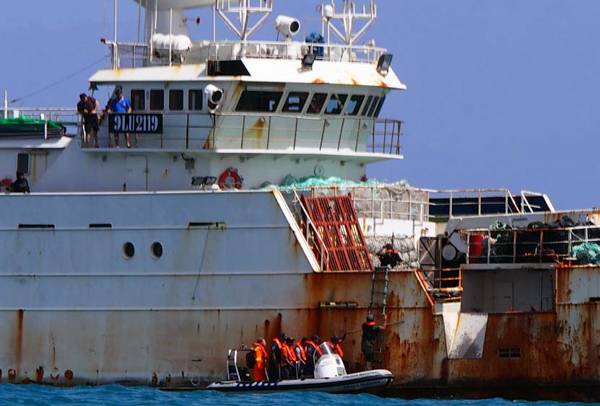 Authorities in Cape Verde board the Songhua, a vessel known to poach toothfish in the Southern Ocean. Photo credit: Sea Shepherd/Josephine Watmore On May 20, Peter Hammarstedt, captain of the ship Bob Barker, was in the Cape Verdean port of Mindelo off the coast of West Africa, when he spotted a ship that he thought […]
Authorities in Cape Verde board the Songhua, a vessel known to poach toothfish in the Southern Ocean. Photo credit: Sea Shepherd/Josephine Watmore On May 20, Peter Hammarstedt, captain of the ship Bob Barker, was in the Cape Verdean port of Mindelo off the coast of West Africa, when he spotted a ship that he thought […]
Expert panel rebukes Japan’s new whaling proposal
 Antarctic minke whale caught be Japanese vessel, the Yushin Maru, in 2008. Photo by: Australian Customs and Border Protection Service. Last year, the International Court of Justice (ICJ) ruled that Japan must halt its whaling activities in the Southern Ocean as it found no evidence that the killing of hundreds of Antarctic minke whales (Balaenoptera […]
Antarctic minke whale caught be Japanese vessel, the Yushin Maru, in 2008. Photo by: Australian Customs and Border Protection Service. Last year, the International Court of Justice (ICJ) ruled that Japan must halt its whaling activities in the Southern Ocean as it found no evidence that the killing of hundreds of Antarctic minke whales (Balaenoptera […]
For the first time, Sea Shepherd targets Antarctic toothfish poachers
 Patagonian toothfish, often sold as Chilean seabass. Photo by: U.S. FDA. For the first time, marine conservation group, Sea Shepherd, is employing their controversial methods to protect Antarctic and Patagonian toothfish. Dubbed “Operation Icefish,” Sea Shepherd Australia is sending two ships into Antarctic waters to disrupt illegal vessels targeting the little-known species that are often […]
Patagonian toothfish, often sold as Chilean seabass. Photo by: U.S. FDA. For the first time, marine conservation group, Sea Shepherd, is employing their controversial methods to protect Antarctic and Patagonian toothfish. Dubbed “Operation Icefish,” Sea Shepherd Australia is sending two ships into Antarctic waters to disrupt illegal vessels targeting the little-known species that are often […]
Russia and China blamed for blocking Antarctic marine reserve
.600.jpg) An Antarctic krill. Photo by: Uwe Kils/Creative Commons 3.0. Another year, another failed attempt to protect a significant chunk of the Ross Sea, which sits off the coast of Antarctica. According to observers, efforts to create the world’s biggest marine protected area to date were shot down by Russia and China during a meeting in […]
An Antarctic krill. Photo by: Uwe Kils/Creative Commons 3.0. Another year, another failed attempt to protect a significant chunk of the Ross Sea, which sits off the coast of Antarctica. According to observers, efforts to create the world’s biggest marine protected area to date were shot down by Russia and China during a meeting in […]
Conservationists work to give South Georgia back to the birds
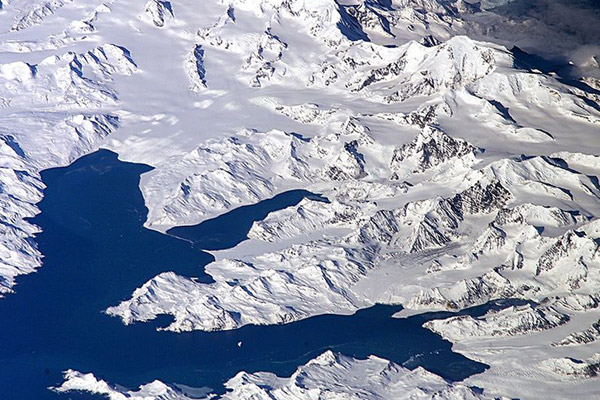 A team on South Georgia has successfully completed the world’s largest rodent eradication in an effort to rid the British territory of millions of rats and mice. Against the backdrop of an approaching Antarctic winter between February and May, three helicopters encountered perilous flying conditions while peppering the southern Atlantic island with 183 tonnes of […]
A team on South Georgia has successfully completed the world’s largest rodent eradication in an effort to rid the British territory of millions of rats and mice. Against the backdrop of an approaching Antarctic winter between February and May, three helicopters encountered perilous flying conditions while peppering the southern Atlantic island with 183 tonnes of […]
Plan to preserve the world’s ‘last ocean’ killed by Russia
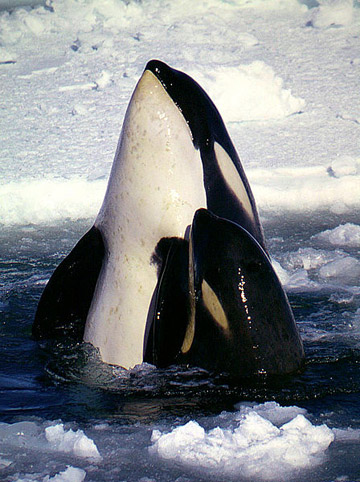 As the most pristine marine ecosystem on the planet, Antarctica’s Ross Sea has become dubbed the world’s “last ocean.” Home to an abundance of penguins, whales, orcas, seals, and massive fish, the Ross Sea has so far largely avoided the degradation that has impacted much of the world’s other marine waters. However, a landmark proposal […]
As the most pristine marine ecosystem on the planet, Antarctica’s Ross Sea has become dubbed the world’s “last ocean.” Home to an abundance of penguins, whales, orcas, seals, and massive fish, the Ross Sea has so far largely avoided the degradation that has impacted much of the world’s other marine waters. However, a landmark proposal […]
Australia aims to end Japan’s whaling
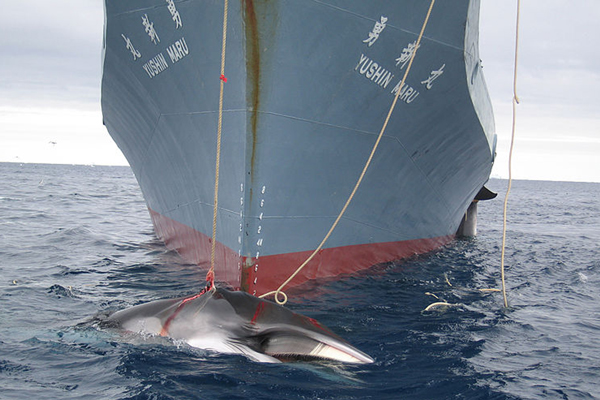 Australia is hoping to put a permanent end to Japan’s annual slaughter of hundreds of whales in the Southern Ocean, in a landmark legal challenge that begins this week. Australia, a vocal opponent of Japan’s annual “scientific” hunts in the Antarctic, says it is confident that the international court of justice (ICJ) in The Hague […]
Australia is hoping to put a permanent end to Japan’s annual slaughter of hundreds of whales in the Southern Ocean, in a landmark legal challenge that begins this week. Australia, a vocal opponent of Japan’s annual “scientific” hunts in the Antarctic, says it is confident that the international court of justice (ICJ) in The Hague […]
Animals dissolving due to carbon emissions
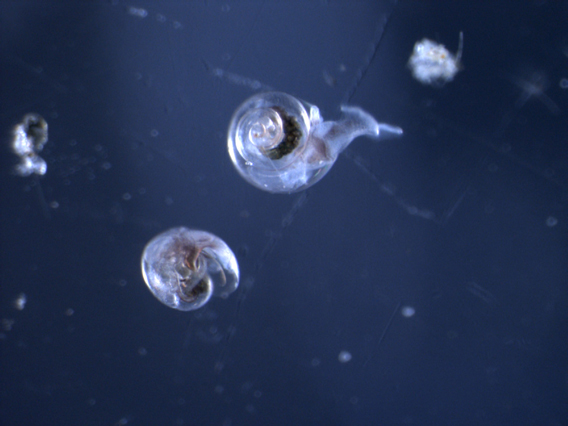 Marine snails, known as Limacina helicina antarctica, are seeing their shells dissolve due to carbon emissions. Photo by: Nina Bednarsek. Marine snails, also known as sea butterflies, are dissolving in the Southern Seas due to anthropogenic carbon emissions, according to a new study in Nature GeoScience. Scientists have discovered that the snail’s shells are being […]
Marine snails, known as Limacina helicina antarctica, are seeing their shells dissolve due to carbon emissions. Photo by: Nina Bednarsek. Marine snails, also known as sea butterflies, are dissolving in the Southern Seas due to anthropogenic carbon emissions, according to a new study in Nature GeoScience. Scientists have discovered that the snail’s shells are being […]
Penguins face a slippery future
 Adelie penguins hunting for food. Photo by: J. Weller. Click to enlarge. Pablo Garcia Borboroglu will be speaking at the Wildlife Conservation Network Expo in San Francisco on October 13th, 2012. Penguins have spent years fooling us. With their image seemingly every where we turn—entertaining us in animated films, awing us in documentaries, and winking […]
Adelie penguins hunting for food. Photo by: J. Weller. Click to enlarge. Pablo Garcia Borboroglu will be speaking at the Wildlife Conservation Network Expo in San Francisco on October 13th, 2012. Penguins have spent years fooling us. With their image seemingly every where we turn—entertaining us in animated films, awing us in documentaries, and winking […]
Three U.S. retailers pledge to avoid fish from embattled Ross Sea
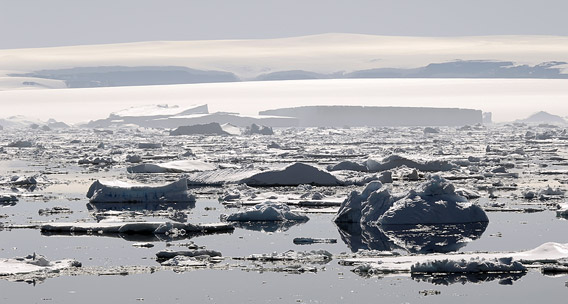 Antarctica: Ross Island in the Ross Sea. Photo by: Bigstock. The Ross Sea, a massive bay off Antarctica, has been dubbed the world’s last ocean due to its pristine state, long-untouched by industry and fisheries. However, over the last 15 years New Zealand commercial fisheries have entered the sea, seeking the slow-growing Antarctic toothfish which […]
Antarctica: Ross Island in the Ross Sea. Photo by: Bigstock. The Ross Sea, a massive bay off Antarctica, has been dubbed the world’s last ocean due to its pristine state, long-untouched by industry and fisheries. However, over the last 15 years New Zealand commercial fisheries have entered the sea, seeking the slow-growing Antarctic toothfish which […]
‘Lost world’ dominated by Yeti crabs discovered in the Antarctic deep
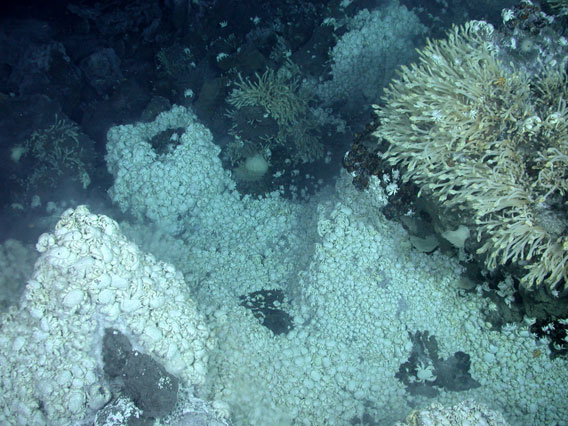 A new species of Yeti crabs cover nearly every inch of the “lost world” of deep sea Antarctic hydrothermal vents. Photo by: Oxford University. Click to enlarge. Scientists have discovered a deep sea ecosystem dominated by hairy pale crabs off of Antarctica. The new species of “Yeti crabs” survive alongside many other likely new species, […]
A new species of Yeti crabs cover nearly every inch of the “lost world” of deep sea Antarctic hydrothermal vents. Photo by: Oxford University. Click to enlarge. Scientists have discovered a deep sea ecosystem dominated by hairy pale crabs off of Antarctica. The new species of “Yeti crabs” survive alongside many other likely new species, […]
Feeds: news | india | latam | brasil | indonesia
 Authorities in Cape Verde board the Songhua, a vessel known to poach toothfish in the Southern Ocean. Photo credit: Sea Shepherd/Josephine Watmore On May 20, Peter Hammarstedt, captain of the ship Bob Barker, was in the Cape Verdean port of Mindelo off the coast of West Africa, when he spotted a ship that he thought […]
Authorities in Cape Verde board the Songhua, a vessel known to poach toothfish in the Southern Ocean. Photo credit: Sea Shepherd/Josephine Watmore On May 20, Peter Hammarstedt, captain of the ship Bob Barker, was in the Cape Verdean port of Mindelo off the coast of West Africa, when he spotted a ship that he thought […] Antarctic minke whale caught be Japanese vessel, the Yushin Maru, in 2008. Photo by: Australian Customs and Border Protection Service. Last year, the International Court of Justice (ICJ) ruled that Japan must halt its whaling activities in the Southern Ocean as it found no evidence that the killing of hundreds of Antarctic minke whales (Balaenoptera […]
Antarctic minke whale caught be Japanese vessel, the Yushin Maru, in 2008. Photo by: Australian Customs and Border Protection Service. Last year, the International Court of Justice (ICJ) ruled that Japan must halt its whaling activities in the Southern Ocean as it found no evidence that the killing of hundreds of Antarctic minke whales (Balaenoptera […] Patagonian toothfish, often sold as Chilean seabass. Photo by: U.S. FDA. For the first time, marine conservation group, Sea Shepherd, is employing their controversial methods to protect Antarctic and Patagonian toothfish. Dubbed “Operation Icefish,” Sea Shepherd Australia is sending two ships into Antarctic waters to disrupt illegal vessels targeting the little-known species that are often […]
Patagonian toothfish, often sold as Chilean seabass. Photo by: U.S. FDA. For the first time, marine conservation group, Sea Shepherd, is employing their controversial methods to protect Antarctic and Patagonian toothfish. Dubbed “Operation Icefish,” Sea Shepherd Australia is sending two ships into Antarctic waters to disrupt illegal vessels targeting the little-known species that are often […].600.jpg) An Antarctic krill. Photo by: Uwe Kils/Creative Commons 3.0. Another year, another failed attempt to protect a significant chunk of the Ross Sea, which sits off the coast of Antarctica. According to observers, efforts to create the world’s biggest marine protected area to date were shot down by Russia and China during a meeting in […]
An Antarctic krill. Photo by: Uwe Kils/Creative Commons 3.0. Another year, another failed attempt to protect a significant chunk of the Ross Sea, which sits off the coast of Antarctica. According to observers, efforts to create the world’s biggest marine protected area to date were shot down by Russia and China during a meeting in […] A team on South Georgia has successfully completed the world’s largest rodent eradication in an effort to rid the British territory of millions of rats and mice. Against the backdrop of an approaching Antarctic winter between February and May, three helicopters encountered perilous flying conditions while peppering the southern Atlantic island with 183 tonnes of […]
A team on South Georgia has successfully completed the world’s largest rodent eradication in an effort to rid the British territory of millions of rats and mice. Against the backdrop of an approaching Antarctic winter between February and May, three helicopters encountered perilous flying conditions while peppering the southern Atlantic island with 183 tonnes of […] As the most pristine marine ecosystem on the planet, Antarctica’s Ross Sea has become dubbed the world’s “last ocean.” Home to an abundance of penguins, whales, orcas, seals, and massive fish, the Ross Sea has so far largely avoided the degradation that has impacted much of the world’s other marine waters. However, a landmark proposal […]
As the most pristine marine ecosystem on the planet, Antarctica’s Ross Sea has become dubbed the world’s “last ocean.” Home to an abundance of penguins, whales, orcas, seals, and massive fish, the Ross Sea has so far largely avoided the degradation that has impacted much of the world’s other marine waters. However, a landmark proposal […] Australia is hoping to put a permanent end to Japan’s annual slaughter of hundreds of whales in the Southern Ocean, in a landmark legal challenge that begins this week. Australia, a vocal opponent of Japan’s annual “scientific” hunts in the Antarctic, says it is confident that the international court of justice (ICJ) in The Hague […]
Australia is hoping to put a permanent end to Japan’s annual slaughter of hundreds of whales in the Southern Ocean, in a landmark legal challenge that begins this week. Australia, a vocal opponent of Japan’s annual “scientific” hunts in the Antarctic, says it is confident that the international court of justice (ICJ) in The Hague […] Marine snails, known as Limacina helicina antarctica, are seeing their shells dissolve due to carbon emissions. Photo by: Nina Bednarsek. Marine snails, also known as sea butterflies, are dissolving in the Southern Seas due to anthropogenic carbon emissions, according to a new study in Nature GeoScience. Scientists have discovered that the snail’s shells are being […]
Marine snails, known as Limacina helicina antarctica, are seeing their shells dissolve due to carbon emissions. Photo by: Nina Bednarsek. Marine snails, also known as sea butterflies, are dissolving in the Southern Seas due to anthropogenic carbon emissions, according to a new study in Nature GeoScience. Scientists have discovered that the snail’s shells are being […] Adelie penguins hunting for food. Photo by: J. Weller. Click to enlarge. Pablo Garcia Borboroglu will be speaking at the Wildlife Conservation Network Expo in San Francisco on October 13th, 2012. Penguins have spent years fooling us. With their image seemingly every where we turn—entertaining us in animated films, awing us in documentaries, and winking […]
Adelie penguins hunting for food. Photo by: J. Weller. Click to enlarge. Pablo Garcia Borboroglu will be speaking at the Wildlife Conservation Network Expo in San Francisco on October 13th, 2012. Penguins have spent years fooling us. With their image seemingly every where we turn—entertaining us in animated films, awing us in documentaries, and winking […] Antarctica: Ross Island in the Ross Sea. Photo by: Bigstock. The Ross Sea, a massive bay off Antarctica, has been dubbed the world’s last ocean due to its pristine state, long-untouched by industry and fisheries. However, over the last 15 years New Zealand commercial fisheries have entered the sea, seeking the slow-growing Antarctic toothfish which […]
Antarctica: Ross Island in the Ross Sea. Photo by: Bigstock. The Ross Sea, a massive bay off Antarctica, has been dubbed the world’s last ocean due to its pristine state, long-untouched by industry and fisheries. However, over the last 15 years New Zealand commercial fisheries have entered the sea, seeking the slow-growing Antarctic toothfish which […] A new species of Yeti crabs cover nearly every inch of the “lost world” of deep sea Antarctic hydrothermal vents. Photo by: Oxford University. Click to enlarge. Scientists have discovered a deep sea ecosystem dominated by hairy pale crabs off of Antarctica. The new species of “Yeti crabs” survive alongside many other likely new species, […]
A new species of Yeti crabs cover nearly every inch of the “lost world” of deep sea Antarctic hydrothermal vents. Photo by: Oxford University. Click to enlarge. Scientists have discovered a deep sea ecosystem dominated by hairy pale crabs off of Antarctica. The new species of “Yeti crabs” survive alongside many other likely new species, […]